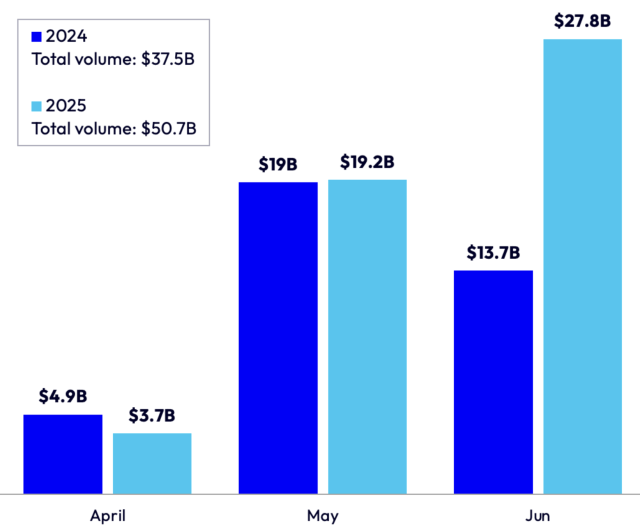Farewell to Spreadsheets: Evolution of Valuation and Risk in Capital Markets
In the intricate world of derivatives finance, precision and efficiency are key. For decades, Microsoft Excel was the go-to tool for financial modeling, valuation, and risk analysis. However, as the industry evolves and complexity surges, Excel's limitations are becoming more apparent.
In recent years, there has been a discernible shift in the industry away from relying solely on Excel for the valuation and risk measurement of derivatives and fixed income portfolios. Instead, institutions are turning to advanced solutions tailored to meet the demands of modern markets. A recent Risk.net article featuring Satyam Kancharla, Chief Product Officer at Numerix, Breaking out of the Cells: Banks’ Long Goodbye to Spreadsheets, speaks to this trend. The article explores the challenges posed by Excel in accurately modeling complex financial instruments and managing associated risks, and explains how many firms are turning to Python as a powerful replacement tool. In this blog, we delve into some of the points raised in this article and include our own observations on the industry’s transition away from Excel.
Limitations of Excel
While Excel is undoubtedly a powerful tool with widespread usability, it has inherent limitations when it comes to handling complex financial calculations around valuation and risk management. As financial products become more sophisticated, particularly in the derivatives and fixed income space, Excel's lack of robustness becomes apparent.
Complex formulas are prone to errors, version control can be challenging, and scalability becomes a concern as data volumes grow. Excel's single-user environment can inhibit collaboration and take a toll on workflow efficiency, particularly in large financial institutions that are managing extensive portfolios.
Need for sophisticated risk management
In today's dynamic financial landscape, effective risk management is non-negotiable. Financial institutions must accurately assess and mitigate risks associated with their portfolios to safeguard against potential losses. Excel's manual processes and susceptibility to errors pose a significant risk to the integrity of risk management practices. On the other side of the coin, advanced enterprise applications offer sophisticated risk analytics, scenario analysis, and stress testing capabilities, enabling institutions to make informed decisions and navigate market volatility with greater confidence.
Complying with evolving standards
Current and emerging regulatory requirements place a heavy burden on financial institutions to ensure compliance with evolving standards. Excel's lack of change logs and auditability make it increasingly challenging for institutions to demonstrate compliance with operational risk mandates. When using Excel models, for instance, it is difficult to gain a proper audit trail on who made changes to calculations and how spreadsheets have changed over time. On the contrary, modern solutions offer robust audit trails, version control mechanisms, and data governance frameworks that streamline compliance efforts and provide regulators with clear visibility into financial operations.
Eye on scalability and performance
As financial institutions scale their operations and manage increasingly complex derivatives and fixed income portfolios, the need for scalable and high-performance solutions becomes critical. Excel's performance limitations come into focus when dealing with large datasets and intricate calculations, where processing delays and inefficiencies are common.
Advanced solutions leverage cutting-edge technology, such as cloud databases and elastic compute, to deliver next-level scalability and performance. This enables institutions to analyze vast amounts of data in real-time and rapidly derive actionable insights.
Python as an alternative
In the financial industry, the use of Python as an alternative to Excel for valuation and risk management is growing. Python's versatility and extensive libraries make it a powerful tool for handling complex financial calculations, managing large datasets, and building sophisticated models.
Many financial institutions are leveraging Python's capabilities to streamline workflow processes, enhance risk analytics, and improve decision-making. Firms are also discovering that programming languages like Python are far more effective than Excel at handling real-time data. What’s more, the open-source nature of Python promotes collaboration and innovation across the firm.
In addition to the benefits of leveraging Python to enhance audit trails and improve operational risk management, there is also the unique benefit of scalability. For example, analysts may want to leverage data that spans back twenty or more years for analysis purposes or even peer into huge volumes of intraday data. Tasks such as these can be done far more effectively using Python’s ecosystem of data science tools and libraries.
Emerging solutions
Recognizing the inadequacies of Excel in meeting the demands of modern finance, a new generation of specialized trading, valuation and risk solutions has emerged. These solutions are often cloud-based and specifically designed to address the unique needs of financial institutions, offering comprehensive functionality tailored to valuation, risk management, and regulatory compliance. Leveraging advanced mathematical models, sophisticated analytics and machine learning algorithms, these solutions empower institutions to make data-driven decisions and stay ahead of market trends.
All in all, it is unlikely that Excel will ever become completely obsolete in derivatives and fixed income finance. However, firms are increasingly exploring alternatives to Excel, and we at Numerix have taken note of this trend and have built a cloud-native, Python-based development platform specifically designed for capital markets application development.
Celent technology report download
You can read more about our development platform, NxCore, along with our valuation and risk application Oneview, in this report from the analyst firm, Celent. The paper offers Celent’s independent findings on how institutions can leverage Numerix technologies to meet the current and future risk demands of a fast-paced digital world: Celent Research: Risk Technology for a Digital World


